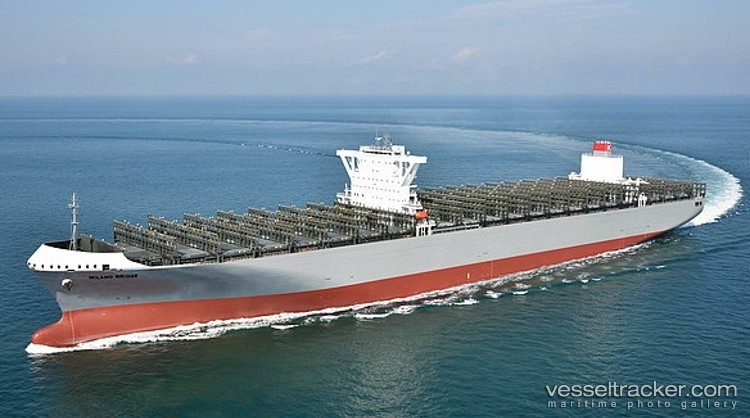Hope you can access it OK
-
Welcome to the new B.I.R.D. Forum. Please be sure to read the "New Member / New Registered ? Please Read" thread in the Coffee Shop. This contains some important information. To become a full member ( £5.90 a year ) simply click on your user name near the top on the right I hope you enjoy the new site ................ Jaws ( John )
You are using an out of date browser. It may not display this or other websites correctly.
You should upgrade or use an alternative browser.
You should upgrade or use an alternative browser.
Interesting I bet the driver had some awkward questions to answer
- Thread starter T.C
- Start date
I have some sympathy. I have never been able to master slow speed manoeuvres on The Norfolk Broads.
Yes, he used to captain the Costa Concordia
Best fun on the Norfolk Broads is the left turn from the Yare into the Bure. Need to time it with the tide for both speed/control and height clearence for the low bridge.I have some sympathy. I have never been able to master slow speed manoeuvres on The Norfolk Broads.
Seen a few get it wrong thinking it was a piece of cake as they were doing the first bit against the tide only to turn the corner and then have the tide suddenly pushing them. The really funny ones then realised they didn't have height clearence under the low bridge but couldn't turn and avoid!!!
She would indeed have had a pilot on board and had at least two tugs fast.
This happened in about April last year and the long and short of it is that she was going too fast. Her approach speed was 8 knots which, for a 147,000 tonne post-Panamax box boat is way too fast. The recommended speed for an approach like that is 6 knots but if I was the Master, I wouldn’t have been doing any more than 4 knots. They take some stopping anyway but with the prop only half submerged, its efficiency is quite compromised.
Insurance settled knock for knock
Jeez get back to the cake stand fatty.She would indeed have had a pilot on board and had at least two tugs fast.
This happened in about April last year and the long and short of it is that she was going too fast. Her approach speed was 8 knots which, for a 147,000 tonne post-Panamax box boat is way too fast. The recommended speed for an approach like that is 6 knots but if I was the Master, I wouldn’t have been doing any more than 4 knots. They take some stopping anyway but with the prop only half submerged, its efficiency is quite compromised.
The Master was a woman.Just shows men are useless at parking
I have had about four people explain to me and demonstrate how you steer when reversing a boat and it remains a complete mystery to me.Best fun on the Norfolk Broads is the left turn from the Yare into the Bure. Need to time it with the tide for both speed/control and height clearence for the low bridge.
Seen a few get it wrong thinking it was a piece of cake as they were doing the first bit against the tide only to turn the corner and then have the tide suddenly pushing them. The really funny ones then realised they didn't have height clearence under the low bridge but couldn't turn and avoid!!!
Mind you, one of those portrayed himself as an expert and that certainly appeared to be the case as he manoeuvred the boat delicately round the tiniest of spaces in a boat yard. Then he quietly said “bugger, the wind has caught me” and I couldn’t help smiling to myself as we less than gently ‘kissed‘ another boat.....

High speed and compromised manoeuvring caused Milano Bridge accident - Container News
The container ship Milano Bridge had failed to slow down as it attempted to berth in Busan New Port on 6 April 2020, causing it to crash into, and demolish a gantry crane, investigations showed. South Korea’s Ministry of Oceans and Fisheries (MOF) said in a 7 May statement that the accident...
Another angle
You don't typically 'steer' a boat when going astern, not in the true sense of the word anyway. First thing is to know what type of prop is on the boat e.g. fixed pitch, right handed, which is what most are. The heading is then changed by bursts of ahead or astern engine, using transverse thrust to cant the bow or stern in whatever direction you need. If you're a real smarty pants, you can use an anchor to control the head when going astern. Masters of small coastal ships use that technique all the time; as the saying goes 'an anchor is cheap tug'.I have had about four people explain to me and demonstrate how you steer when reversing a boat and it remains a complete mystery to me.
Mind you, one of those portrayed himself as an expert and that certainly appeared to be the case as he manoeuvred the boat delicately round the tiniest of spaces in a boat yard. Then he quietly said “bugger, the wind has caught me” and I couldn’t help smiling to myself as we less than gently ‘kissed‘ another boat.....
Wind and tide can really catch you out, if not paying attention.
Yeah, that’s what I thought...You don't typically 'steer' a boat when going astern, not in the true sense of the word anyway. First thing is to know what type of prop is on the boat e.g. fixed pitch, right handed, which is what most are. The heading is then changed by bursts of ahead or astern engine, using transverse thrust to cant the bow or stern in whatever direction you need. If you're a real smarty pants, you can use an anchor to control the head when going astern. Masters of small coastal ships use that technique all the time; as the saying goes 'an anchor is cheap tug'.
Wind and tide can really catch you out, if not paying attention.
Also the rudder works in reverse, can have less or greater effect depending on speed through the water and distance from prop.
‘Going astern’, not reverse.Also the rudder works in reverse, can have less or greater effect depending on speed through the water and distance from prop.
Apparently.
No, not really. The effect of the rudder when operating astern propulsion is minimal and only provides any effect by chance on the basis of it providing a high pressure area to the side which it is angled. In other words, it gets in the way. To operate as designed, a rudder requires a flow of water to be driven over its surfaces.Also the rudder works in reverse, can have less or greater effect depending on speed through the water and distance from prop.
